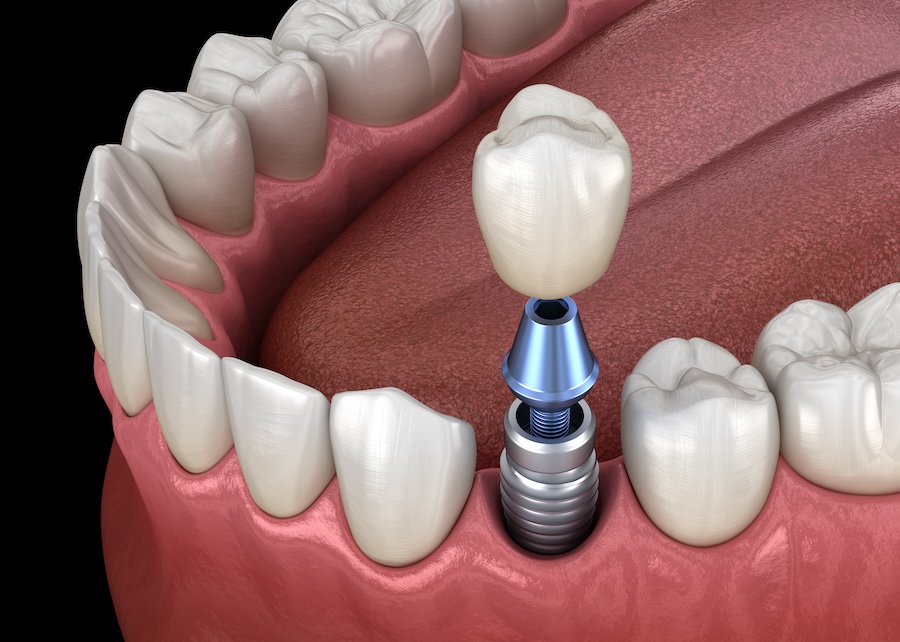 Dental implants have been a reliable solution for replacing missing teeth for years, but like most fields in dentistry, implant technology continues to evolve. New innovations are making the process quicker, more comfortable, and even more accessible to patients. Let’s dive into what’s new in dental implant technology and how these advancements might benefit you.
Dental implants have been a reliable solution for replacing missing teeth for years, but like most fields in dentistry, implant technology continues to evolve. New innovations are making the process quicker, more comfortable, and even more accessible to patients. Let’s dive into what’s new in dental implant technology and how these advancements might benefit you.1. 3D Imaging and Digital Planning
Gone are the days when implants were placed with just a simple X-ray. Now, with the use of 3D imaging and digital planning software, your dentist can get a precise, full view of your mouth and jawbone before surgery. This allows for better accuracy in implant placement, reducing the chance of complications and improving overall success rates. Plus, the detailed planning helps make the surgery quicker and smoother for the patient.
2. Guided Implant Surgery
Taking digital planning to the next level, guided implant surgery uses a computer-generated surgical guide that helps place the implant in exactly the right spot. Think of it like GPS for your dental implant! This level of precision minimizes guesswork, speeds up the procedure, and ensures the implants integrate with your bone more effectively.
3. Immediate Implants
Traditionally, dental implants required a waiting period between tooth extraction and implant placement, but not anymore. With immediate implants, dentists can now place the implant on the same day the tooth is removed, reducing treatment time and the number of appointments. For patients who want a faster solution, this is a game-changer.
4. Improved Implant Materials
New biocompatible materials are being used to make dental implants even more durable and efficient. Titanium is still a popular choice, but zirconia implants are gaining traction. Zirconia is not only strong but also white in color, which makes it an excellent option for patients who want a more natural look without any visible metal.
5. Nanotechnology in Implants
Nanotechnology is making its way into dental implants, too. Implants coated with nano-scale materials can encourage faster bone growth around the implant, leading to quicker healing times and better integration with the jawbone. It’s a cutting-edge advancement that improves the overall success of dental implants.
6. All-on-4 and All-on-6 Implants
For patients missing an entire arch of teeth, the All-on-4 and All-on-6 procedures offer a streamlined, minimally invasive way to restore a full set of teeth. These systems use four or six strategically placed implants to support a complete arch of teeth, providing a stable, comfortable, and long-lasting solution without needing a full set of individual implants.
7. Smart Implants
Yes, you read that right—smart implants! Researchers are developing implants equipped with tiny sensors that can monitor the healing process and the overall health of the implant. These sensors can alert both the patient and the dentist to any issues, such as early signs of infection or implant failure, allowing for immediate intervention.
Why These Innovations Matter
The advancements in dental implant technology mean that patients can expect shorter recovery times, fewer complications, and even better long-term results. Whether it’s improving precision with 3D-guided surgery or exploring new, natural-looking materials, these innovations are reshaping how dental implants are performed and maintained.
Dental Implants at Springhurt Hills Dentistry in Louisville, KY
At Springhurst Hills Dentistry in Louisville, KY, Dr. Lan Tran and our team stay on the cutting edge of dental technology to ensure our patients receive the best care possible. Ready to learn more about the latest in dental implants? Contact us to see how these advancements can benefit your smile!
Posted on behalf of Dr. Lan Tran, Springhurst Hills Dentistry

Contact us today to see how we can help you and your family get healthy smiles!
Send Us An Email
